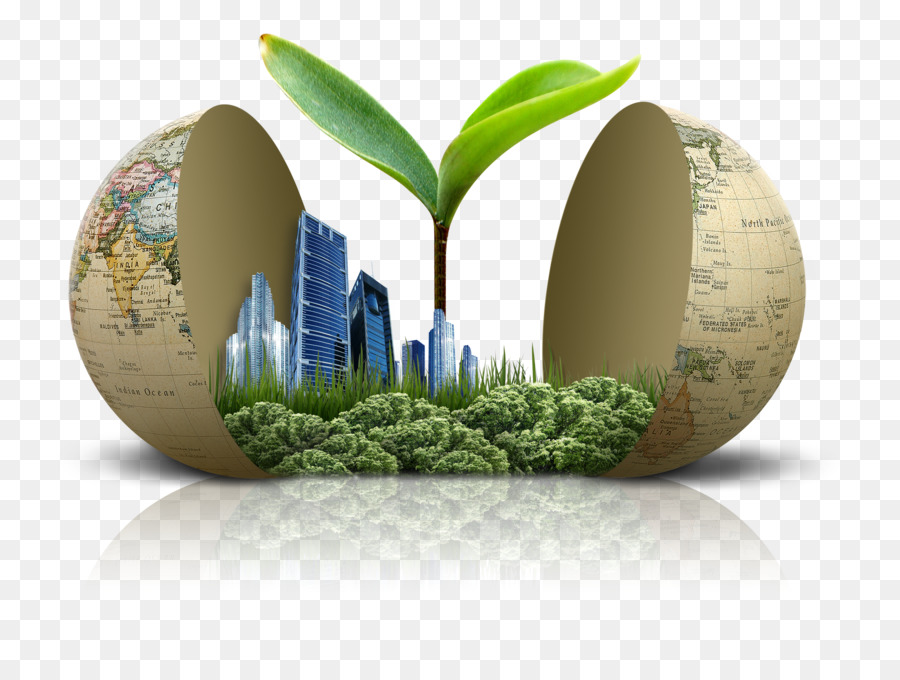Environmental Technology Market was valued at USD 603.89 billion in 2023 and it is expected to hit USD 936.44 billion by 2033, growing at a CAGR of 4.5% from 2024 to 2033.
Introduction
The Environmental Technology market is experiencing rapid growth and innovation as businesses and governments worldwide prioritize sustainability and environmental stewardship. This comprehensive overview delves into the dynamics of the Environmental Technology market, exploring its key segments, growth drivers, challenges, and future prospects. From renewable energy to waste management solutions, Environmental Technology encompasses a wide range of products and services aimed at mitigating environmental impact and fostering a greener, more sustainable future.
1. Understanding Environmental Technology
Environmental Technology, also known as cleantech or green technology, encompasses a diverse array of products, services, and processes designed to address environmental challenges and promote sustainable development. This includes technologies for renewable energy generation, energy efficiency, water and air purification, waste management, pollution control, and more. Environmental Technology solutions leverage innovation and advanced engineering to minimize resource consumption, reduce pollution, and protect ecosystems.
2. Market Segmentation
The Environmental Technology market can be segmented into various categories:
- Renewable Energy: This segment includes technologies such as solar, wind, hydroelectric, geothermal, and biomass energy generation.
- Energy Efficiency: Solutions aimed at improving energy efficiency in buildings, industries, transportation, and appliances fall under this category.
- Water and Wastewater Management: Technologies for water purification, wastewater treatment, desalination, and water recycling are vital for sustainable water management.
- Air Quality Management: Solutions for air pollution monitoring, emission control, and indoor air quality enhancement contribute to cleaner air and public health.
- Waste Management and Recycling: Technologies for waste collection, sorting, recycling, composting, and waste-to-energy conversion play a crucial role in reducing landfill waste and conserving resources.
- Environmental Monitoring and Analytics: Tools for environmental monitoring, data analysis, remote sensing, and predictive modeling enable better decision-making and risk assessment.
3. Growth Drivers
Several factors are driving the growth of the Environmental Technology market:
- Climate Change Concerns: Growing awareness of climate change and its adverse impacts drive demand for technologies that reduce greenhouse gas emissions and mitigate environmental degradation.
- Regulatory Mandates: Stringent environmental regulations and mandates at the national and international levels compel businesses to adopt cleaner technologies and comply with emission standards.
- Cost Competitiveness: The declining cost of renewable energy technologies, coupled with rising fossil fuel prices, makes clean energy alternatives increasingly attractive from a cost perspective.
- Resource Scarcity: Depletion of natural resources and water scarcity in many regions necessitate the adoption of technologies for resource conservation, recycling, and sustainable management.
- Technological Advancements: Advances in materials science, nanotechnology, biotechnology, and digitalization drive innovation in Environmental Technology, enabling more efficient and scalable solutions.
- Public Awareness and Consumer Preferences: Increasing consumer awareness of environmental issues and preferences for eco-friendly products and services create market opportunities for sustainable technologies.
4. Challenges
Despite its growth potential, the Environmental Technology market faces several challenges:
- High Initial Costs: The upfront investment required for implementing environmental technologies can be prohibitive for some businesses, particularly small and medium-sized enterprises (SMEs).
- Policy Uncertainty: Shifting regulatory landscapes and policy uncertainty in some regions create barriers to investment and market entry for Environmental Technology providers.
- Intermittency and Reliability: Intermittency and variability of renewable energy sources such as solar and wind pose challenges for grid integration and energy storage, requiring innovative solutions.
- Technological Barriers: Technical challenges related to efficiency, scalability, and performance hinder the adoption of certain environmental technologies, necessitating further research and development.
- Infrastructure Constraints: Inadequate infrastructure for waste management, water treatment, and renewable energy deployment in some regions limits market growth and adoption rates.
- Awareness and Education: Lack of awareness, technical expertise, and capacity-building initiatives impede the adoption and diffusion of Environmental Technology solutions in certain markets.
Receive the FREE Sample Report of Environmental Technology Market Research Insights @ https://stringentdatalytics.com/sample-request/environmental-technology-market/13388/
Market Segmentations:
Global Environmental Technology Market: By Company
• Lennox International
• Abatement Technologies
• Waste Connections
• Carbon Clean
• Cypher Environmental
• TRC Companies
• Tandem Technical
• Climeworks
• Carbon Engineering
• IntelexLennox International
• Abatement Technologies
• Waste Connections
• Carbon Clean
• Cypher Environmental
• TRC Companies
• Tandem Technical
• Climeworks
• Carbon Engineering
• Intelex
Global Environmental Technology Market: By Vertical Type
• Residential/municipal
• Industrial transportation & logistics
• Power, energy & utilities
• Manufacturing
• Retail & consumer goods
• Construction & building materials
• Government & defense
• Oil & gas
• Others (law enforcement, healthcare & life sciences)
Global Environmental Technology Market: By Application
• Wastewater treatment
• Water purification management
• Sewage treatment
• Pollution monitoring
• Dust emissions
• Dry steaming
• Gas dissolution
• Precision cooling
• Solid waste treatment
• Energy source for power generation and fuel
• Others (crop monitoring, soil monitoring/ soil analysis, and fire detection)
Regional Analysis of Global Environmental Technology Market
All the regional segmentation has been studied based on recent and future trends, and the market is forecasted throughout the prediction period. The countries covered in the regional analysis of the Global Environmental Technology market report are U.S., Canada, and Mexico in North America, Germany, France, U.K., Russia, Italy, Spain, Turkey, Netherlands, Switzerland, Belgium, and Rest of Europe in Europe, Singapore, Malaysia, Australia, Thailand, Indonesia, Philippines, China, Japan, India, South Korea, Rest of Asia-Pacific (APAC) in the Asia-Pacific (APAC), Saudi Arabia, U.A.E, South Africa, Egypt, Israel, Rest of Middle East and Africa (MEA) as a part of Middle East and Africa (MEA), and Argentina, Brazil, and Rest of South America as part of South America.
Click to Purchase Environmental Technology Market Research Report @ https://stringentdatalytics.com/purchase/environmental-technology-market/13388/?license=single
Market Trends
Several trends are shaping the Environmental Technology market:
- Decentralization and Distributed Generation: Increasing decentralization of energy generation and distribution, facilitated by distributed renewable energy systems and microgrids, enhances resilience and energy security.
- Smart and Connected Solutions: Integration of Internet of Things (IoT), artificial intelligence (AI), and data analytics enables smart and connected Environmental Technology solutions for real-time monitoring, optimization, and predictive maintenance.
- Circular Economy Initiatives: Growing emphasis on circular economy principles drives innovation in waste management, recycling, and resource recovery technologies, fostering a closed-loop approach to resource utilization.
- Electrification of Transportation: Electrification of transportation systems, including electric vehicles (EVs) and charging infrastructure, reduces reliance on fossil fuels and contributes to cleaner air and lower emissions.
- Emergence of Green Finance: Increasing availability of green bonds, sustainable investment funds, and climate financing mechanisms mobilizes capital for Environmental Technology projects and sustainable infrastructure development.
- Collaboration and Partnerships: Collaborative initiatives between governments, businesses, academia, and non-profit organizations facilitate knowledge-sharing, technology transfer, and market diffusion of Environmental Technology solutions.
Future Outlook
The Environmental Technology market is poised for significant growth and innovation in the coming years:
- Global Expansion: The market is expected to expand globally, driven by increasing environmental awareness, regulatory pressures, and technological advancements.
- Integration and Convergence: Integration of Environmental Technology solutions across sectors such as energy, water, agriculture, and transportation fosters synergies and holistic approaches to sustainability.
- Emerging Markets: Rapid urbanization, industrialization, and population growth in emerging markets create opportunities for Environmental Technology adoption and market penetration.
- Resilience and Adaptation: Environmental Technology solutions will play a crucial role in enhancing resilience to climate change impacts, such as extreme weather events, sea-level rise, and water scarcity.
- Innovation and Disruption: Continued innovation in materials science, renewable energy, biotechnology, and digitalization will drive disruptive changes and transformational shifts in the Environmental Technology landscape.
- Policy Support and Incentives: Policy support, financial incentives, and public-private partnerships will catalyze investment in Environmental Technology projects and accelerate market development.
FAQs about Environmental Technology
Q1. What is Environmental Technology? A1. Environmental Technology, also known as cleantech or green technology, encompasses a diverse range of products, services, and processes designed to address environmental challenges and promote sustainability.
Q2. What are some examples of Environmental Technology? A2. Examples of Environmental Technology include renewable energy systems (solar, wind, hydroelectric), energy-efficient appliances, water purification systems, waste recycling technologies, and air pollution control devices.
Q3. Why is Environmental Technology important? A3. Environmental Technology is important for mitigating climate change, reducing pollution, conserving natural resources, and fostering sustainable development practices that benefit both people and the planet.
Q4. How can businesses benefit from adopting Environmental Technology? A4. Businesses can benefit from adopting Environmental Technology by reducing operational costs, enhancing resource efficiency, complying with environmental regulations, improving brand reputation, and accessing new market opportunities driven by consumer demand for sustainable products and services.
Q5. What role does government regulation play in driving the adoption of Environmental Technology? A5. Government regulations and policies, such as emission standards, renewable energy mandates, carbon pricing mechanisms, and subsidies for green technology deployment, incentivize businesses to invest in Environmental Technology solutions and comply with environmental requirements.
Conclusion
The Environmental Technology market represents a dynamic and evolving landscape driven by environmental challenges, technological innovation, and market forces. From renewable energy generation to waste management solutions, Environmental Technology plays a crucial role in addressing pressing environmental issues and fostering a more sustainable future. With continued investment, collaboration, and policy support, the Environmental Technology market is poised to thrive, driving positive environmental impact and economic growth worldwide.
About Stringent Datalytics
Stringent Datalytics offers both custom and syndicated market research reports. Custom market research reports are tailored to a specific client’s needs and requirements. These reports provide unique insights into a particular industry or market segment and can help businesses make informed decisions about their strategies and operations.
Syndicated market research reports, on the other hand, are pre-existing reports that are available for purchase by multiple clients. These reports are often produced on a regular basis, such as annually or quarterly, and cover a broad range of industries and market segments. Syndicated reports provide clients with insights into industry trends, market sizes, and competitive landscapes. By offering both custom and syndicated reports, Stringent Datalytics can provide clients with a range of market research solutions that can be customized to their specific needs.
Reach US
Stringent Datalytics
+1 346 666 6655
Social Channels:




Leave a Reply